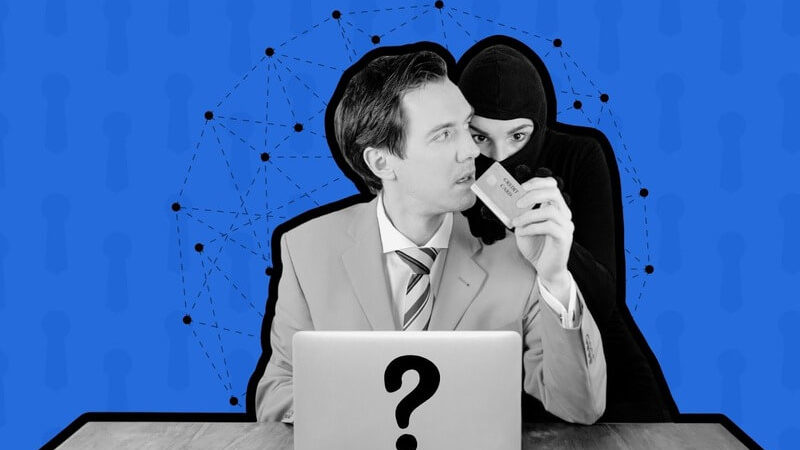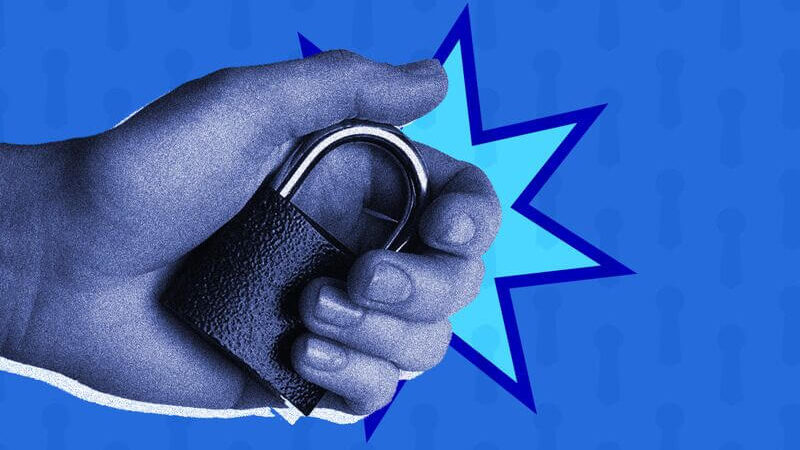Identity Theft Recovery: Steps to Take if Your Identity Is Stolen
Identity theft is a major problem worldwide and is only growing in popularity among criminals.
There were more than 1.1 million identity theft cases last year in just the United States. This led to the loss of $43 billion in total.
If you’re reading this, you might be worried that you could be one of these cases, but you don’t have to be; you can mitigate losses and regain your identity.

What to Do If Your Identity is Stolen?
- Take a Deep Breath
- Call Banks and Companies to Report Fraud
- Call the Credit Bureaus
- Check Your Credit Report
- File Identity Theft Report With the Federal Trade Commission
- Close Fraudulent Accounts and Reverse Charges
- Report the Identity Theft to Relevant Companies
- Report Crime to Your Local Police Department
- Start Using an Identity Theft Monitoring/Protection Service
- Check Accounts and Reports for Activity
- Secure Your Accounts and Devices
- Reflect, Consider Your Security Habits and Breathe
If you’re reading this, there’s a good chance you’re dealing with identity theft right now. It’s ok, we’re here to help, and there are steps you can take.
1. Take a Deep Breath
Identity theft is a serious invasion of your privacy and security. If you’ve discovered you’re a victim of identity theft; it’s normal to have a lot of emotions. Let yourself feel everything. Then take a deep breath to clear your head.
The good news is you can recover from identity theft. It will take time. It will be frustrating. But it doesn’t have to be difficult.
Follow these steps for what to do if your identity is stolen. Take them one at a time, so you don’t get overwhelmed.
2. Call Banks and Companies to Report Fraud
Your first step is to let companies know your identity has been stolen. Identity theft can take many forms, from opening new credit cards and draining your bank account to filing a false tax return and claiming your refund.
Call the fraud department at all companies where your identity was compromised. Explain that your identity was stolen. Ask for copies of documents and statements that show the fraudulent accounts and charges. You should always note the name, date, and time of any phone conversations.
While you are already on the phone, ask for your accounts to be closed or frozen. This prevents the identity thief from continuing to use your account and creates more problems for you to solve.
3. Call the Credit Bureaus
The three major credit bureaus do more than track your credit and issue a credit score. Experian, TransUnion, and Equifax can all place a fraud alert on your credit. A fraud alert will notify any institution pulling your credit that your identity has been compromised. This triggers a few extra steps to verify your identity before issuing new lines of credit.
Fraud alerts are free to place and last for one year. You can set up an account online or call. This only needs to be done with one credit bureau. Once the fraud alert is in place, the first credit bureau will transfer the request to the remaining two bureaus.
Fraud alerts don’t prevent new lines of credit from being issued. If you want extra security, you can place a credit freeze. This prevents any financial institution from checking your credit. Without access to your credit report, no new lines of credit can be issued. Unlike a fraud alert, you must call each credit bureau individually to place a credit freeze. The freeze will stay in place until you remove it.
Experian
TransUnion
Equifax
✎ Related: How To Freeze or Lock Your Social Security Number (SSN)? ➔
4. Check Your Credit Report
Even if you regularly monitor your credit score through your bank or another service, it’s worth pulling your full credit report if you’re a victim of identity theft. Your credit report will have all lines of credit that are open in your name. It will also have payment history, credit inquiries, and other detailed information.
Once a year, you can get your free credit report from each credit bureau. Look at all three reports to see if there are any accounts or transactions you don’t recognize. Document any fraudulent accounts or late payments. These can negatively affect your credit score. You should request to have them removed from your report.
✎ Related: Ways To Remove Hard Inquiries From Credit Reports ➔
5. File Identity Theft Report With the Federal Trade Commission
Once you’ve compiled the data on the extent of your identity theft, head to the FTC’s identity theft website to file your report. This will give you a detailed recovery plan with pre-filled forms and letters.
While the FTC can’t pursue criminal charges for identity theft, filing with the FTC aids law enforcement agencies. Reporting your identity theft to the FTC also grants you certain rights.
6. Close Fraudulent Accounts and Reverse Charges
You can’t just let the identity thief keep getting away with it.
Outside of reporting the theft (we’ll get to that in a minute), you need to close the fraudulently created accounts and stop any more damage or chaos from occurring.
At the same time, if existing accounts were hijacked or your credit card information was chosen, you need to dispute any problematic charges you see on your statements.
To do so, you’ll want to contact customer support (or a special line if it exists) for each account. You can look up the specific process for each company online or call for general help and work from there. You will want to have relevant information and paperwork on hand if it is available to you.
This can be time-consuming but work on it one account at a time unless you are waiting for something. Be sure to mention that identity theft was involved.
The above being said, try to do each closure quickly so the identity thief ideally doesn’t notice until you’re done. This will help prevent them from trying to hinder your efforts.
7. Report the Identity Theft to Relevant Companies
Now that you’ve talked to the authorities, you should start working on contacting relevant companies, explaining the situation, and reversing charges, etc., where necessary. Some common calls or messages to make are:
- Your banks, if you haven’t already talked to them, put a fraud alert on your accounts. This is especially the case if money is removed due to identity theft. If you are timely, you might be able to get your money back.
- Your credit card providers, if you haven’t talked to them about a freeze or fraud alert yet. You will also want to dispute fraudulent charges that you’ve marked down.
- Most credit cards have strong protections against identity theft if you catch it in time. You’ll likely experience the easiest time here.
- Other companies might have been involved in identity theft. Perhaps other credit lines were opened (or attempts were made). You’ll need to contact them to explain the situation and cancel anything that still needs cancellation.
You might have done much of this already as part of the last step, but consider this part your safety met for organizations that fell through the cracks.
8. Report Crime to Your Local Police Department
Identity theft is a serious crime that should be reported to your local police department. Bring a copy of your FTC Identity Theft Report, along with your ID, proof of address (utility bill or mortgage statement,) and all other documents you have related to your identity theft.
Once completed, ask for a copy of the police report. This may help resolve any disputes that come up.
9. Start Using an Identity Theft Monitoring/Protection Service
After making the calls and reporting the crime, you’ll want to start a system of looking out for further problems and breaches.
However, you don’t have to deal with identity theft alone, and you don’t need to watch for it constantly by yourself, either. In fact, I don’t recommend doing it yourself. You have other concerns, and you likely aren’t as good as the professionals when looking for signs of fraud.
For this, I recommend Aura to most people. It has a wide enough range of monitoring options, provides identity theft insurance, and is easy to work with. It can also help you resolve identity theft problems should they come up in the future.
10. Check Accounts and Reports for Activity
When you know you’re a victim of identity theft, you need to review and re-review your reports for charges, accounts, and requests that aren’t right. Now that you have stymied the tide, so to speak, you need to look for lingering problems.
If you’re using a service, you might receive reports that have done this for you. Review them.
However, you may still want to review them personally. It will give you a better understanding of your credit, spending habits, and how these reports work. It will also give a personal peace of mind.
If you do find something? Take action, call the appropriate company, and try to have the activity removed from your account or reversed.
11. Secure Your Accounts and Devices
While you might have stopped the identity theft and gotten things under control by now, your accounts and devices might still be vulnerable, leading to more problems.
You need to secure your accounts, meaning changing passwords, minimizing remote access opportunities, and using extra security features as they are available.
There will likely be specific instructions or pages on securing your accounts for each website or service provider, so follow those guides to start.
Similarly, you must ensure your devices are malware-free and no one has backdoor access to your account. A virus scan from a security or antivirus program will help, as will changing your passwords, as mentioned above. Log out and into your accounts and devices for good measure.
12. Reflect, Consider Your Security Habits and Breathe
As we talked about device security in the last section, consider what security habits (or lack thereof) might have led to this breach. Did you share too much information? Did you fall for a phishing scam? It’s okay to make a mistake, but it’s vital that you understand it and make changes as needed.
Finally, breathe. Further mistakes can be caused by not realizing your emotions about the issue impacting your judgment. It’s time to move on with your life, for the most part, so treat yourself to something nice.
The critical steps are over, and now you just need to let your protection service do its thing and occasionally check on your accounts. It may appear again, but you will know how to react and what to do.
Important Notes When Dealing with this Process
- Don’t rush this, and think through what you’re doing. Panicking will be counterproductive in the long run. There may also be times when you must wait for a response or results. This is normal. Work on the next step when this happens, if possible.
- You may encounter resistance when reporting identity theft, with authorities or companies telling you it isn’t a real problem or that reporting wastes time. It isn’t, by default, and it would be a waste of time only if the people didn’t take it seriously.
- You won’t be done once you finish all the steps. Once your information is out on the internet (and there’s a good chance it is), you can become a victim again if you aren’t vigilant.
- It could happen a week after you take care of things, a month, or even years later. That’s why getting a good protection service and checking your accounts regularly is important.
- It could happen a week after you take care of things, a month, or even years later. That’s why getting a good protection service and checking your accounts regularly is important.
- If you know the perpetrator, you might feel betrayed, enraged, and want to confront them personally. I understand your pain, but wait to confront them until you have your identity back, have reported the crime, and have all the necessary documentation. Give yourself time to process the issue, and don’t tell the perpetrator that you know what they did.
- Related to this, if the perpetrator is a random person online, don’t try to track them down or find them out. Focus on getting your credit back and let law enforcement handle it.
Protecting Yourself Against Identity Theft

Getting your credit back in order after identity theft is good. Prevention is better. Yet what are the precautions you can take?
We’ve gone over a few already as part of our response advice, but here’s a list of the most helpful preventative measures:
- Practice better cybersecurity habits and protect your online accounts and devices. Malware, public network usage, and compromised accounts cause identity theft.
- Use strong passwords for your accounts and a password manager if you’re having trouble keeping track of them. Bitwarden and NordPass are good options there.
- Use two-factor authentication or verification when it is available.
- Use a VPN (I recommend Norton 360, ExpressVPN, or Surfshark) on public networks, or avoid using public networks. You might have one freely available but not realize it, so check with the online services you subscribe to.
- Try to keep your personal information offline. Some information can be publicly available (your name, email address, and social media accounts). Still, others, such as your phone number and account numbers, should be harder, if not impossible, to find.
- Think about what might be realistic to keep a secret.
- Think about what might be realistic to keep a secret.
- Learn about common scams and types of fraud used to gain information for identity theft. We have many articles on these scams on our blog, and looking up common scams online will teach you about the ones to be concerned about.
- Get a service such as Aura to help protect and watch your accounts. Many of these services also provide identity theft insurance and recovery services, making things much easier for you.
- Try to make sure your documents and devices are safe. Often mail, wallets, or devices are stolen to gain information for identity theft, or it is a side effect of the theft.
Conclusion
Identity theft is a major crime affecting hundreds of thousands to millions of people yearly. You shouldn’t panic or blame yourself if you become a victim of this crime, but there are steps you need to take to resolve the issue.
Go by the advice above, and you’ll minimize the damage and help prevent it from happening again. Take precautions, invest in protection services such as Aura to help you watch out for future problems, and learn more about the issue to watch for the signs. Come back to this page if you need to, and I hope you’ve taken care of identity theft for the long haul.
Related Articles To Protect Your Information:

